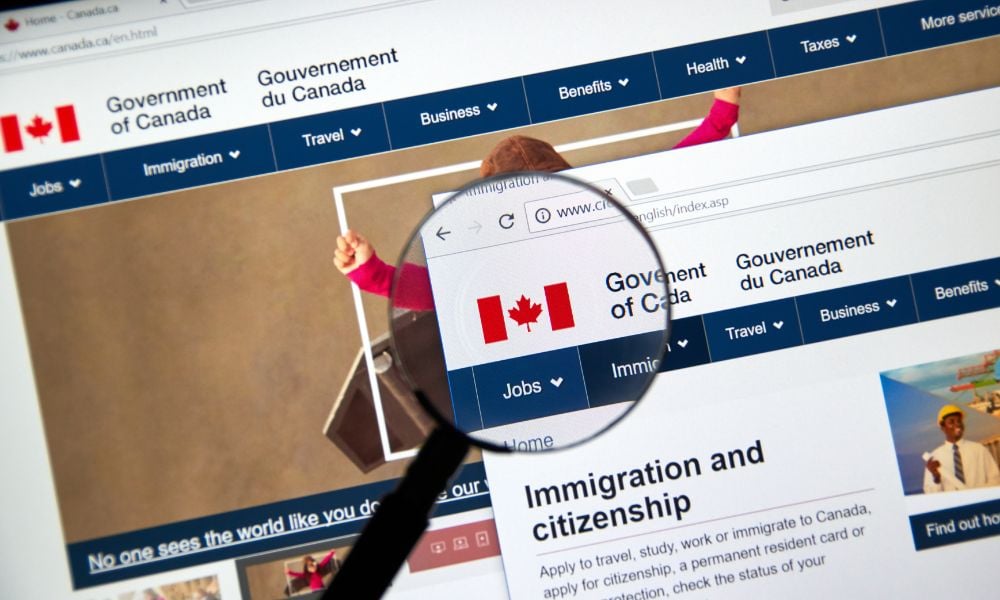Minister of immigration reveals a plan to cut immigration targets and support long-term economic and population growth

Marc Miller, minister of immigration, Refugees and Citizenship, has unveiled Canada’s 2025–2027 Immigration Levels Plan, which aims to temporarily slow population growth for a more sustainable, long-term increase.
For the first time, the plan sets specific targets for both temporary and permanent residents, including international students and foreign workers.
Miller emphasized the importance of this strategy in addressing current challenges. “Today's announcement is the next step in our plan to address the evolving immigration needs of our country.”
He noted that while the economy needs newcomers, the government must adapt policies to address current pressures and ensure access to jobs, housing, and services for all.
Immigration has been a cornerstone of Canada’s economic recovery following the pandemic. As businesses reopened, the demand for workers exceeded the available supply, prompting swift government action to attract top talent from around the world.
This strategy not only boosted the economy but also helped avert a recession. By integrating these individuals into the workforce quickly, robust immigration helped to sustain the economy.
The new immigration levels plan aims to manage the pressures on housing, infrastructure, and social services in the short term while supporting long-term economic and social growth.
According to Miller, the plan “preserves the integrity of our immigration programs” and is designed to set newcomers up for success.
The plan projects a slight population decline of 0.2 percent in both 2025 and 2026, with growth resuming at 0.8 percent by 2027.
This decline is expected as a result of reduced immigration targets across several streams and natural population loss, alongside the movement of temporary residents.
The 2025–2027 plan also reduces the permanent resident target from 500,000 in 2025 to 395,000, and further reduces targets for 2026 and 2027 to 380,000 and 365,000, respectively.
Additionally, Canada is working to reduce the number of temporary residents to 5 percent of the population by the end of 2026.
Temporary population reductions are expected due to new measures, including a cap on international students and stricter eligibility criteria for temporary foreign workers.
These changes, alongside reforms to temporary programs, aim to balance population growth with housing supply and employment opportunities.
Canada’s temporary population is expected to decline by 445,901 in 2025 and 445,662 in 2026, with a modest increase of 17,439 in 2027 as some temporary residents transition to permanent status.
One of the core goals of the plan is to transition more temporary residents—particularly those already in Canada as students or workers—to permanent residency.
Representing more than 40 percent of overall permanent admissions in 2025, these individuals are already established in Canadian society, with housing and employment, and will continue to contribute to the workforce without creating additional demand for social services.
By 2027, permanent resident admissions through the economic class will represent 61.7 percent of total admissions.
In an effort to support growth outside of Quebec, the plan also aims to increase Francophone immigration, with targets of 8.5 percent in 2025, 9.5 percent in 2026, and 10 percent in 2027.
Canada’s population reached 41 million in April 2024, with immigration accounting for nearly 98 percent of growth in 2023. This new plan aims to continue fostering economic growth, improving GDP per capita, and reducing pressure on the housing market.
By decreasing immigration volumes, the housing supply gap is expected to shrink by 670,000 units by 2027.
The government has implemented several measures to uphold the integrity of Canada’s immigration system and protect vulnerable individuals.
These include reforms to the International Student Program, tightening eligibility requirements for temporary foreign workers, post-graduation work permits, and spousal work permits for international students and temporary workers.
Miller concluded that while immigration is essential to the country's economic success, the government has responded to pressures on resources, adapting policies to ensure that both newcomers and Canadians benefit from well-paying jobs, affordable homes, and necessary social services.



